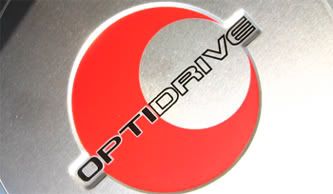does a 97 cavalier 2.2 have a thermostat?
I heard it doesn't from some people and I heard it does from people, but anyway a mechanic told me that it's located right where the upper radiator hose goes into the motor, but I took the casing off and there was just a hole, so I went to put the one I bought in, and it didn't fit, I put the right side in and it seemed like the metal rim was too large.
so basically I want the official word on if I need to run a thermostat, and if so where does it go?

All these engines have to have a thermostat, or else they can not maintain the proper operating temperature. They will overheat or run cold and give no heat from the heater.
On the 2.2, look down at the water pump, below the alternator and the left side, forward lower. You should see an extension pipe bolted to the back of the water pump that runs forward and out from under the exhaust manifold. The front of this pipe will have a large hose and a small hose attached to it. When the engine is cold, remove the large hose. Once the hose is off there will be a hose adapter bolted with 2 bolts to the extension pipe. remove these 2 bolts and the thermostat is between the hose adapter and the pipe.
Note which way the thermostat sits, so that you install the new one the same way. Make sure the old thermostat comes out with the old gasket. Also make sire the new thermostat has a new gasket when you put it in. Put t all back together and refill the coolant. Make sure you bleed the air out using the bleed port on the heater tube - this is the tube connected to the smaller hose on that extension pipe - or you will likely get an air lock.
Mike wrote:All these engines have to have a thermostat, or else they can not maintain the proper operating temperature. They will overheat or run cold and give no heat from the heater.
On the 2.2, look down at the water pump, below the alternator and the left side, forward lower. You should see an extension pipe bolted to the back of the water pump that runs forward and out from under the exhaust manifold. The front of this pipe will have a large hose and a small hose attached to it. When the engine is cold, remove the large hose. Once the hose is off there will be a hose adapter bolted with 2 bolts to the extension pipe. remove these 2 bolts and the thermostat is between the hose adapter and the pipe.
Note which way the thermostat sits, so that you install the new one the same way. Make sure the old thermostat comes out with the old gasket. Also make sire the new thermostat has a new gasket when you put it in. Put t all back together and refill the coolant.
i agree with all of that. however,
Quote:
Make sure you bleed the air out using the bleed port on the heater tube - this is the tube connected to the smaller hose on that extension pipe - or you will likely get an air lock.
is wrong.on the housing you originally took off, there is a bleeder screw on the top of it, and this is the highest point of the cooling system. there's even a decal on the heater pipe that says do not use.
 JBO Stickers! Get yours today!
JBO Stickers! Get yours today!
I have no such decal on or near the heater bleeder port. The OEM manual distinctively indicates to bleed the system to avoid air lock and overheat. Up to 1996 models, there are 2 bleeder ports - one on the heater tube (the highest point on the heater core loop) and 1 on the block adapter for the rad inlet hose (the highest point on the rad cooling loop). Both should be bled. Starting on the 1997 model, the bleed port on the rad loop (at the block inlet from the upper hose) was removed and replaced with a bleed tube that crosses the engine over to the coolant reservoir and provides a small continuous bleed into the reservoir to eliminate this air lock problem. On my 96, last year I had to replace the heater tube with a new one from the dealer, and it also did not come with any decal on it indicating not to use the bleed port on it. On my 97 having the cross over bleed tube is great, as it really does eliminate the air lock problem and the engine overheat issues associated with such. Bleeding of the heater tube only ensures you get the air out of the heater core loop.
Thus for the 1997 and up, there is only one bleed port, and it is on the heater tube. (at least as per the OEM manual, my 97 model, and the few others I have worked on). Possibly there are some of the early 1997 versions that did not yet incorporate this feature?


